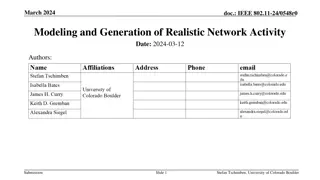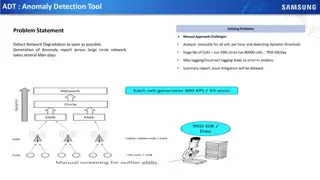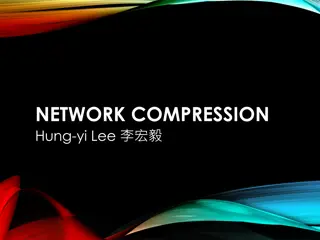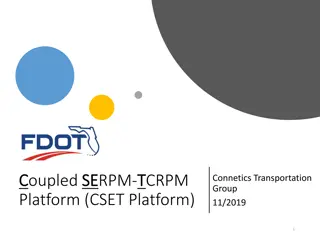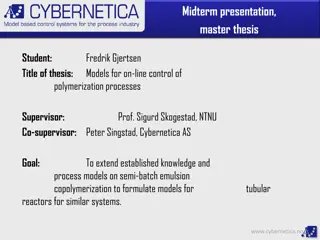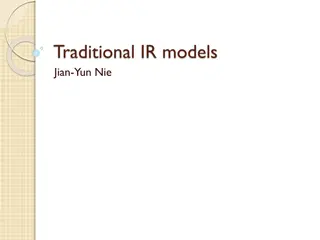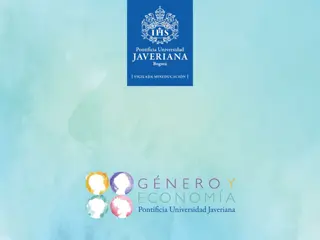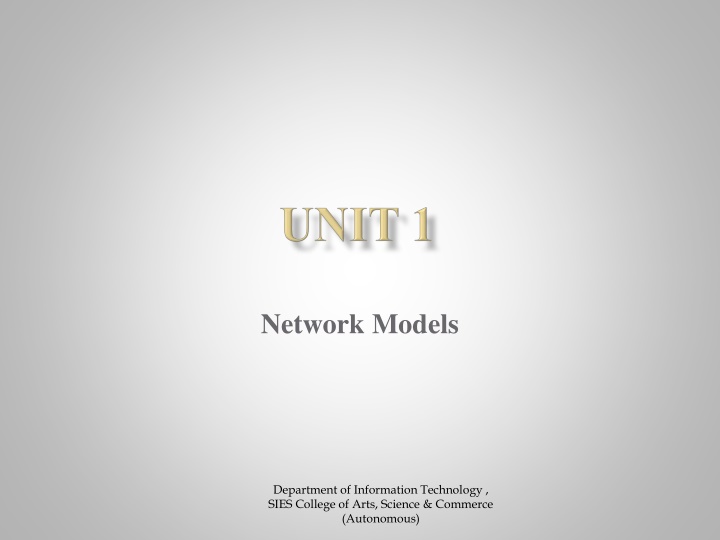
Protocol Layering in Data Communication and Networking
Explore the significance of protocol layering in data communication and networking, where protocols define rules for effective communication. Learn how protocol layering facilitates complex communication scenarios, following principles for bidirectional communication and protocol uniformity across layers.
Download Presentation

Please find below an Image/Link to download the presentation.
The content on the website is provided AS IS for your information and personal use only. It may not be sold, licensed, or shared on other websites without obtaining consent from the author. If you encounter any issues during the download, it is possible that the publisher has removed the file from their server.
You are allowed to download the files provided on this website for personal or commercial use, subject to the condition that they are used lawfully. All files are the property of their respective owners.
The content on the website is provided AS IS for your information and personal use only. It may not be sold, licensed, or shared on other websites without obtaining consent from the author.
E N D
Presentation Transcript
Network Models Department of Information Technology , SIES College of Arts, Science & Commerce (Autonomous)
In data communication and networking, a protocol defines the rules that both the sender and receiver and all intermediate devices need to follow to be able to communicate effectively. When communication is simple, we may need only one simple protocol; when the communication is complex, we may need to divide the task between different layers, in which case we need a protocol at each layer, or protocol layering. Department of Information Technology , SIES College of Arts, Science & Commerce (Autonomous)
First Scenario Department of Information Technology , SIES College of Arts, Science & Commerce (Autonomous)
Second Scenario Department of Information Technology , SIES College of Arts, Science & Commerce (Autonomous)
First Principle The first principle dictates that if we want bidirectional communication, we need to make each layer so that it is able to perform two opposite tasks, one in each direction. Second Principle The second principle that we need to follow in protocol layering is that the two objects under each layer at both sites should be identical. Department of Information Technology , SIES College of Arts, Science & Commerce (Autonomous)
Department of Information Technology , SIES College of Arts, Science & Commerce (Autonomous)
TCP/IP is a protocol suite (a set of protocols organized in different layers) used in the Internet today. It is a hierarchical protocol made up of interactive modules, each of which provides a specific functionality. The term hierarchical means that each upper level protocol is supported by the services provided by one or more lower level protocols. Department of Information Technology , SIES College of Arts, Science & Commerce (Autonomous)
Department of Information Technology , SIES College of Arts, Science & Commerce (Autonomous)
Department of Information Technology , SIES College of Arts, Science & Commerce (Autonomous)
Department of Information Technology , SIES College of Arts, Science & Commerce (Autonomous)
Physical layer Lowest level in TCP/IP Responsible for carrying individual bits in a frame. Hidden layer- transmission media under physical layer. Transmission medium does not carry bits, it carries electrical or optical signals. Department of Information Technology , SIES College of Arts, Science & Commerce (Autonomous)
Data Link layer Routers responsible for choosing best links. Data link layer is responsible for taking the datagram and moving it across the link. The link can be wired LAN with a link layer switch , a wireless LAN or a wired LAN. Data link layer takes the datagram and encapsulates it in a packet called frame. Department of Information Technology , SIES College of Arts, Science & Commerce (Autonomous)
Network layer Responsible for creating a connection between source computer and destination computer. Communication at network layer is host-to-host. Responsible for routing the packet through possible routes. The network layer in Internet includes the main protocol. IP defines the format of the packet called datagram. IP is connectionless protocol that provides no flow control, no error control and no congestion control. Network layer also includes unicast and multicast routing protocols. Some auxiliary protocols:- ICMP, IGMP, DHCP & ARP Department of Information Technology , SIES College of Arts, Science & Commerce (Autonomous)
Application Layer Logical connection is end-to-end. Application layer exchanges messages between each other. Communication at application layer is between two processes. Duty of application layer is process to process communication. Predefined protocols:-The Hypertext Transfer Protocol (HTTP) is a vehicle for accessing the World Wide Web (WWW). The Simple Mail Transfer Protocol (SMTP) is the main protocol used in electronic mail (e-mail) service. The File Transfer Protocol (FTP) is used for transferring files from one host to another. The Terminal Network (TELNET) and Secure Shell (SSH) are used for accessing a site remotely. The Simple Network Management Protocol (SNMP) is used by an administrator to manage the Internet at global and local levels. The Domain Name System (DNS) is used by other protocols to find the network-layer address of a computer. The Internet Group Management Protocol (IGMP) is used to collect membership in a group. Department of Information Technology , SIES College of Arts, Science & Commerce (Autonomous)
Department of Information Technology , SIES College of Arts, Science & Commerce (Autonomous)
Department of Information Technology , SIES College of Arts, Science & Commerce (Autonomous)
Established in 1947, the International Organization for Standardization (ISO) is a multinational body dedicated to worldwide agreement on international standards. An ISO standard that covers all aspects of network communications is the Open Systems Interconnection (OSI) model. An open system is a set of protocols that allows any two different systems to communicate regardless of their underlying architecture. The purpose of the OSI model is to show how to facilitate communication between different systems without requiring changes to the logic of the underlying hardware and software. The OSI model is not a protocol; it is a model for understanding and designing a network architecture that is flexible, robust, and interoperable. Department of Information Technology , SIES College of Arts, Science & Commerce (Autonomous)
Department of Information Technology , SIES College of Arts, Science & Commerce (Autonomous)
Department of Information Technology , SIES College of Arts, Science & Commerce (Autonomous)
OSI Model was completed when TCP/IP was fully in place and lot of time and money was spent on the suite. Some layers in OSI model were never fully defined. When OSI was implemented by an organization in a different application, it did not show a high enough level of performance to entice the Internet authority to switch from the TCP/IP protocol suite to the OSI model. Department of Information Technology , SIES College of Arts, Science & Commerce (Autonomous)
Department of Information Technology , SIES College of Arts, Science & Commerce (Autonomous)




